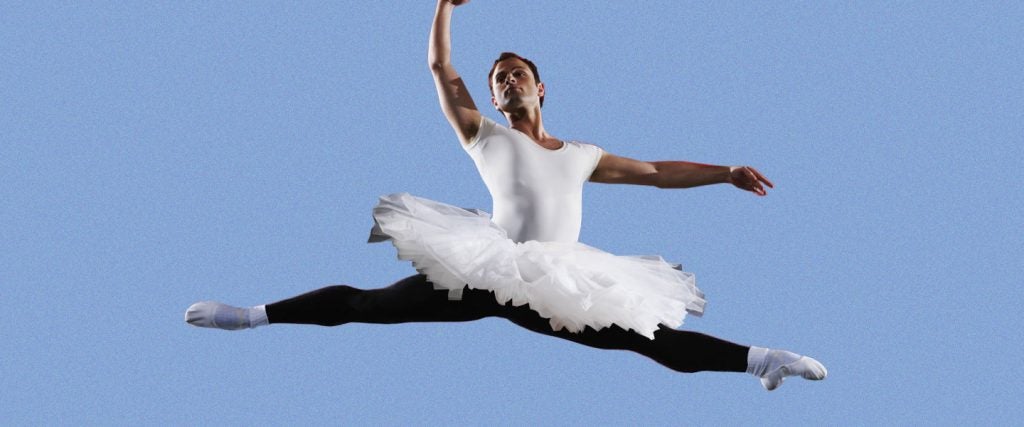It might sound like the pithy back-and-forth of a joke, but it’s actually just Italian:
What do you call a male ballerina?
A ballerino.
That’s right, ballerino is the Italian term for a ballet dancer who is male, just as ballerina is the Italian term for a female dancer. Really, it all depends on where you’re standing. For instance, the French term for a male ballet dancer is danseur. Whereas in New York City, you’d call that same person a ballet dancer, a decidedly less fun term.
I know this because I used to date a few dancers. And so, if I gave one a review of her recital, like, “You were incredible, light and graceful, and that one dude ballerina, he was impressive with his flying leg splits––”, my date would casually correct me with, “The ballerino was phenomenal, his ballotté and his grand jeté had a perfect sense of ballon.”
Of course, I had no clue what any of those words meant. But it wasn’t hard to remember ballerino. It’s the kind of dumb, fun word that sticks with you for life.
We don’t really use it much here in the States though because English isn’t an inherently-gendered language, whereas the Romance languages are, which means suffixes indicate if a job title is male or female. For instance, there’s a navigator if the person is male, but a navigatrix if the person doing that job is female. Same for an aviator/aviatrix. There are other suffixes that denote gender, such as when male is denoted by use of the suffix -or, while female is -ess. You find this in job titles like actor/actress, or the slightly different use of the suffix -er for male and -ess for females (e.g., waiter/waitress). There’s also the more outdated form of -ian and -ienne, such as comedian/comedienne. Although you’ll be hard-pressed to find a woman who calls herself a comedienne these days — and don’t even waste your time looking for a magicienne.
All of these gendered constructions can become cumbersome, or sound odd to the ear when the male or female counterpart is rarely used, like with ballerina. Plus, gendered constructions are falling out of favor as gender-neutral language becomes more standardized. Still, it’s hard to let go of ballerino. It’s just a great example of language at its most balletic.

